DQ Technology 708 ADSL Modem User Manual Manual VisionNet708
DQ Technology, Inc. ADSL Modem Manual VisionNet708
Contents
- 1. Users Manual Part 1
- 2. Users Manual Part 2
Users Manual Part 2
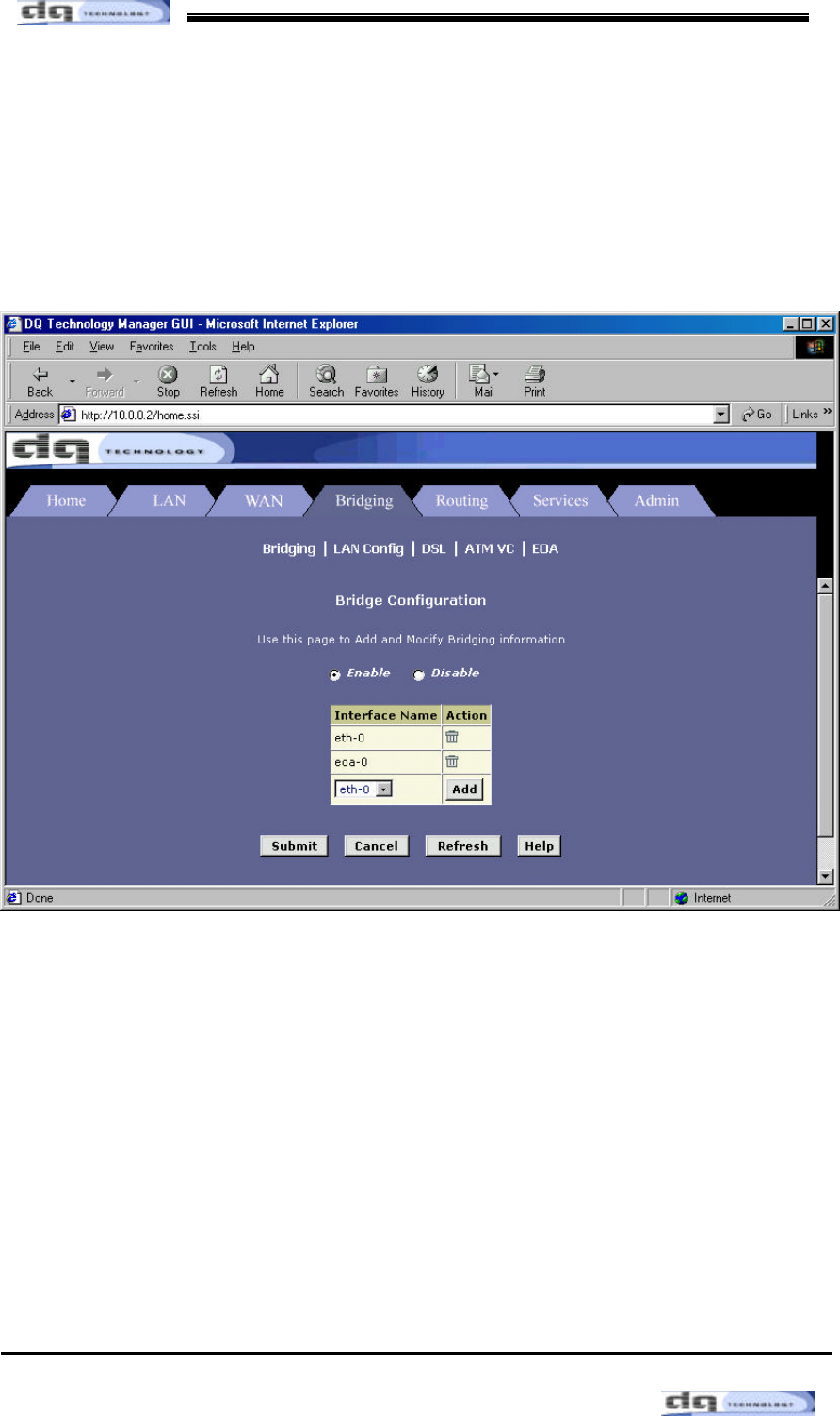
26
ADSL Modem
Manual
2. Using EOA (Bridged) Mode
2-1. After choose the
[Bridging]
tap. Changed
[eoa-0]
and click
[ADD]
such
like folloning picture in Bridge Configuration, fix Bridge configuration
[enable]
.
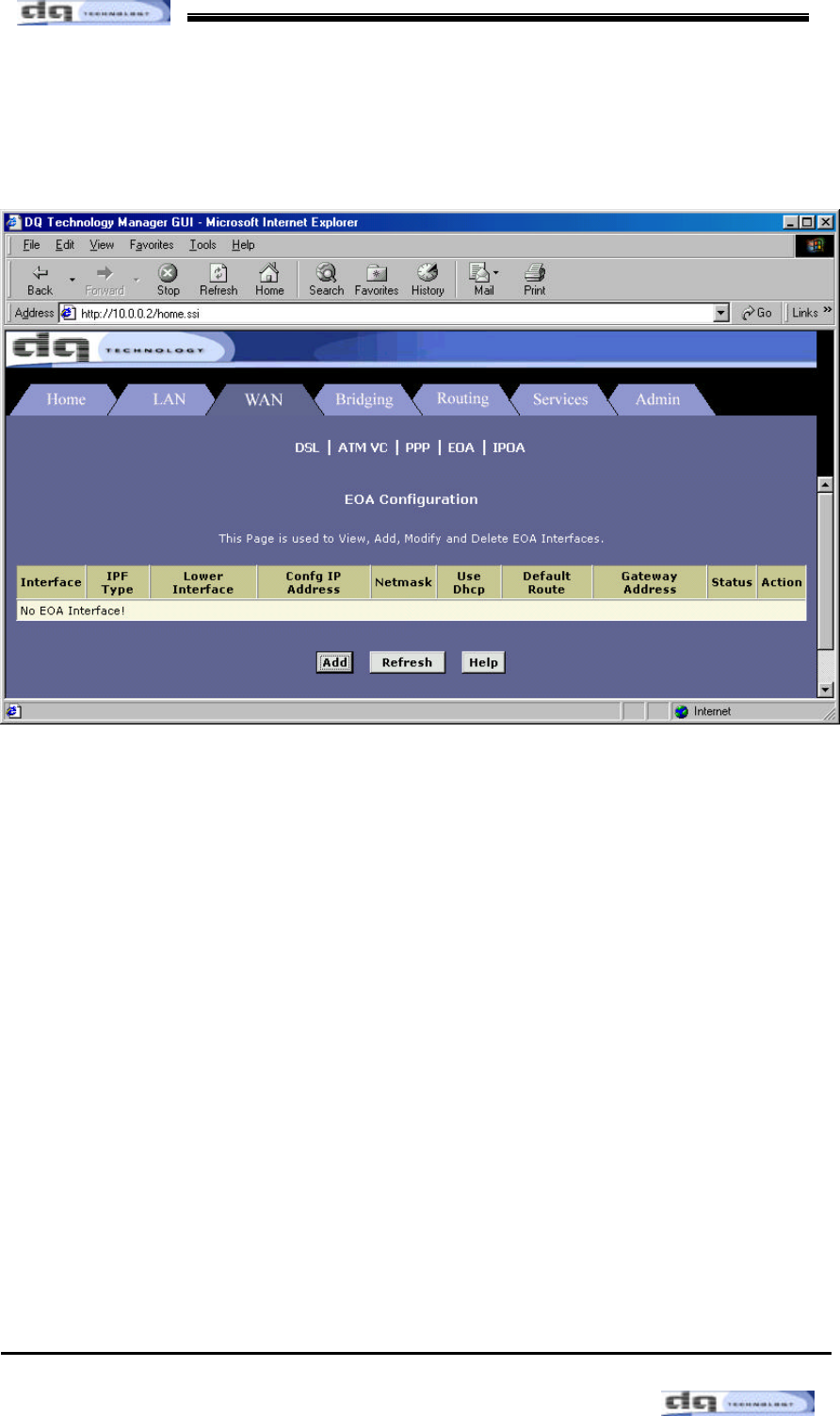
27
ADSL Modem
Manual
2-2. Click the
[WAN]
tap. After select
[EOA]
and click
[Add]
button Next
page spear.
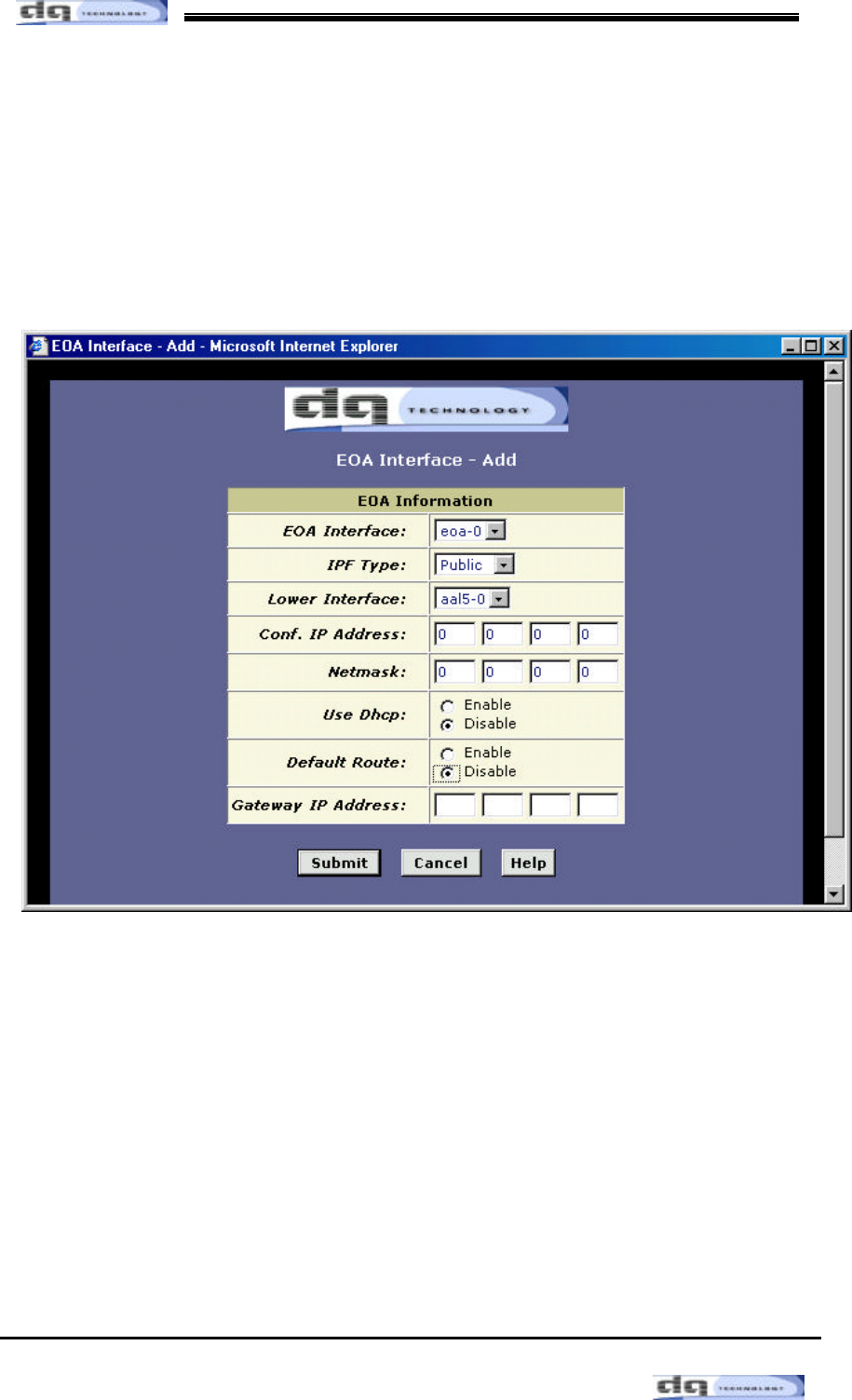
28
ADSL Modem
Manual
2-3. modifying in
[EOA Interface - Add]
page.
l EOA Interface : Choice
[eoa-0]
l Lower Interface : aal5-0(setting value in Lower Interface Provided by ISP )
l
[Use Dhcp & Default Route]
setting
[Disable]
condition
l You be sure that save you did in
[Commit & Reboot]
.
2-4. You do such like “2-3”, you can see fixed page such like below.
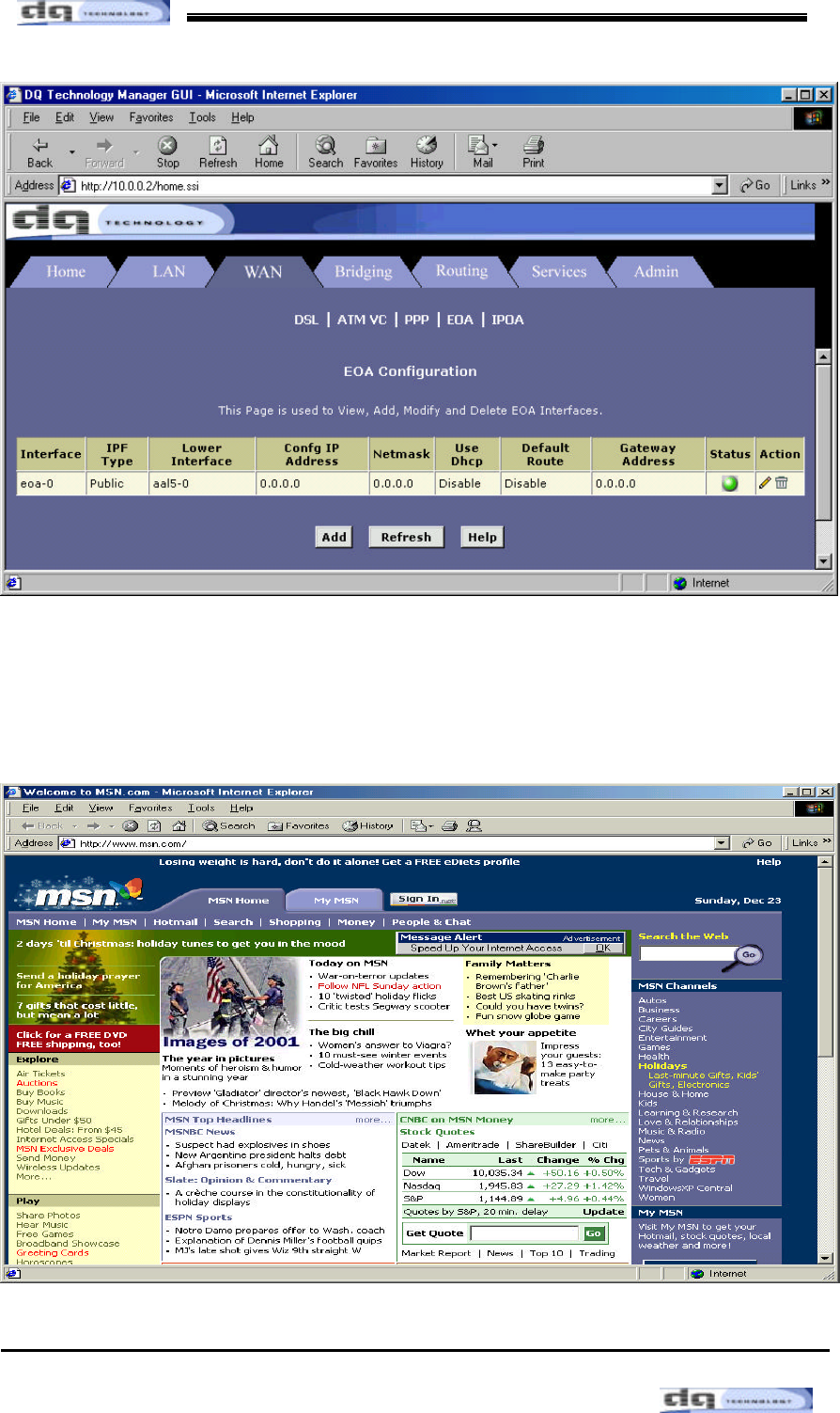
29
ADSL Modem
Manual
2-5. If you this seeing green lamp at “Status” is successful condition.
You can use internet through WinPoET of
[◈ Connect and disconnect the
Internet]
.
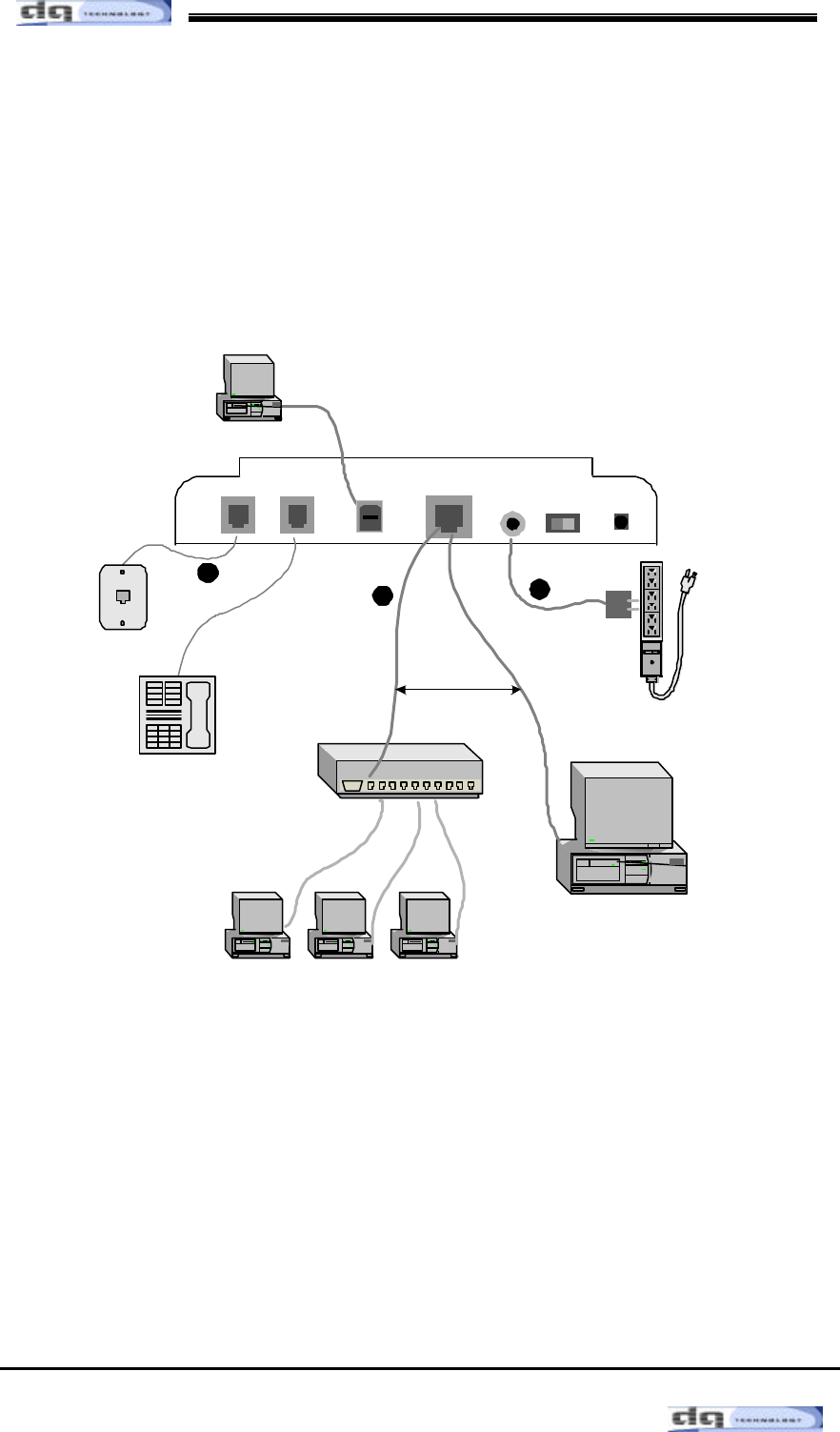
30
ADSL Modem
Manual
3. Using ADSL as router
3-1. Use hub to install hardware as illustrated. Follow the same steps as
described in 1. PPP (PPPoE & PPPoA) Mode above to use ADSL as router.
ADSL/Ethernet Bridge/Router
On/Off
Power
Ethernet
ADSL USB
PHONE Reconfigure
Stand-alone computer
Hub/switch
(for local area
network)
To a hub: use
cross-over cable to
uplink port or
straight cable to
standard port.
(optional)
1
23
Telephone
Wall
jack
To a PC:
use a cross-
over cable
or
Networked Computers
Stand-alone computer
AC adapter
(See section on installing USB
driver before connecting cable.)
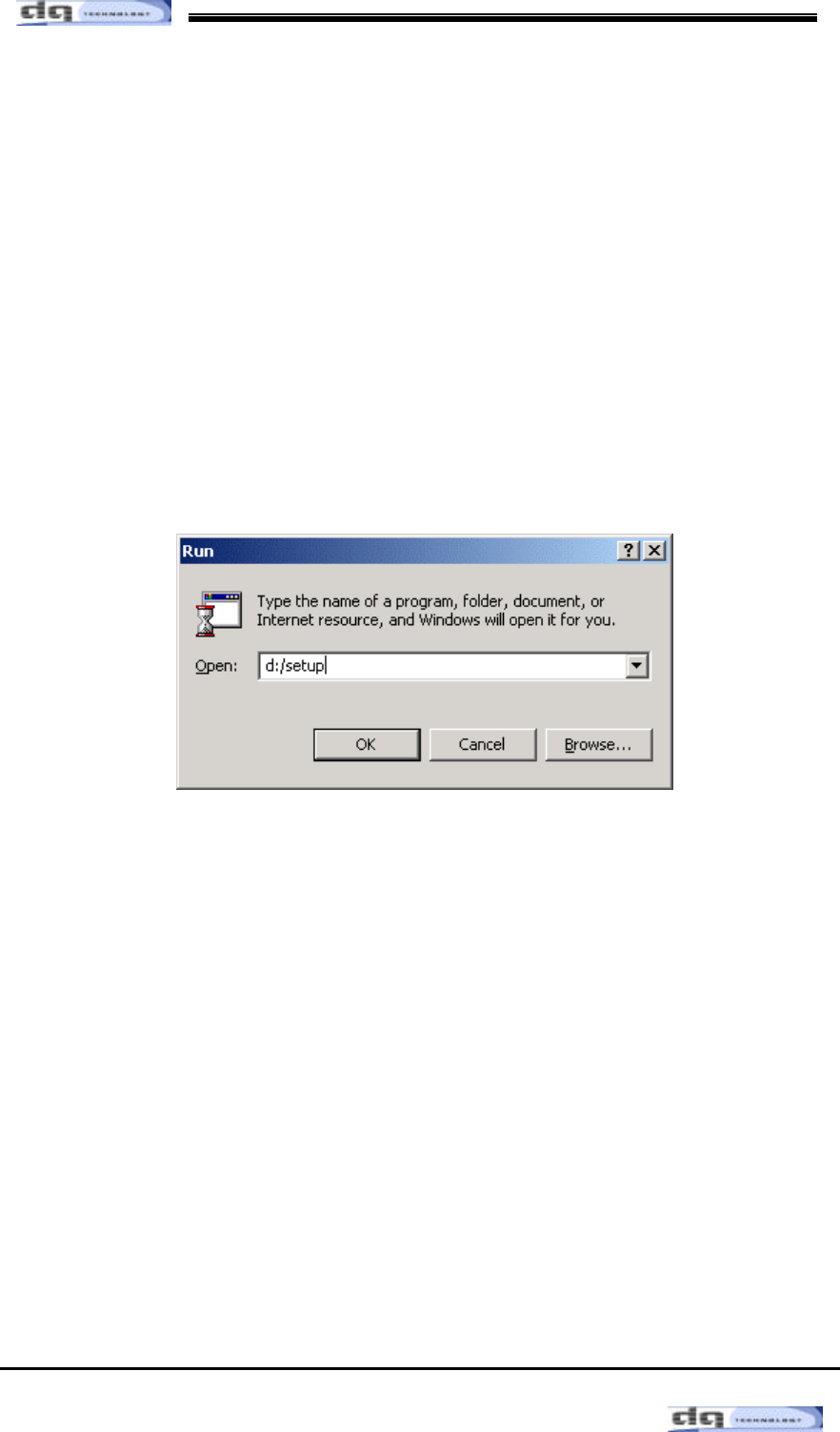
31
ADSL Modem
Manual
4. Using USB ADSL with Ethernet
4-1. In order to use VisionNet 708 with Ethernet and USB, install USB driver
first on the PC for which you want to use USB.
Install USB driver as follows:
4-2. Insert the CD “USB Driver” provided to you in your CD Driver
(Do not plug your USB cable into the the modem at this time.)
Click on the Start menu in Windows and then
Run
Type
[d:/setup]
then click on “
OK
”.
(The letter
“d”
defines your CD ROM drive. This directory may be different on
some PC’s. Please consult your PC manual).
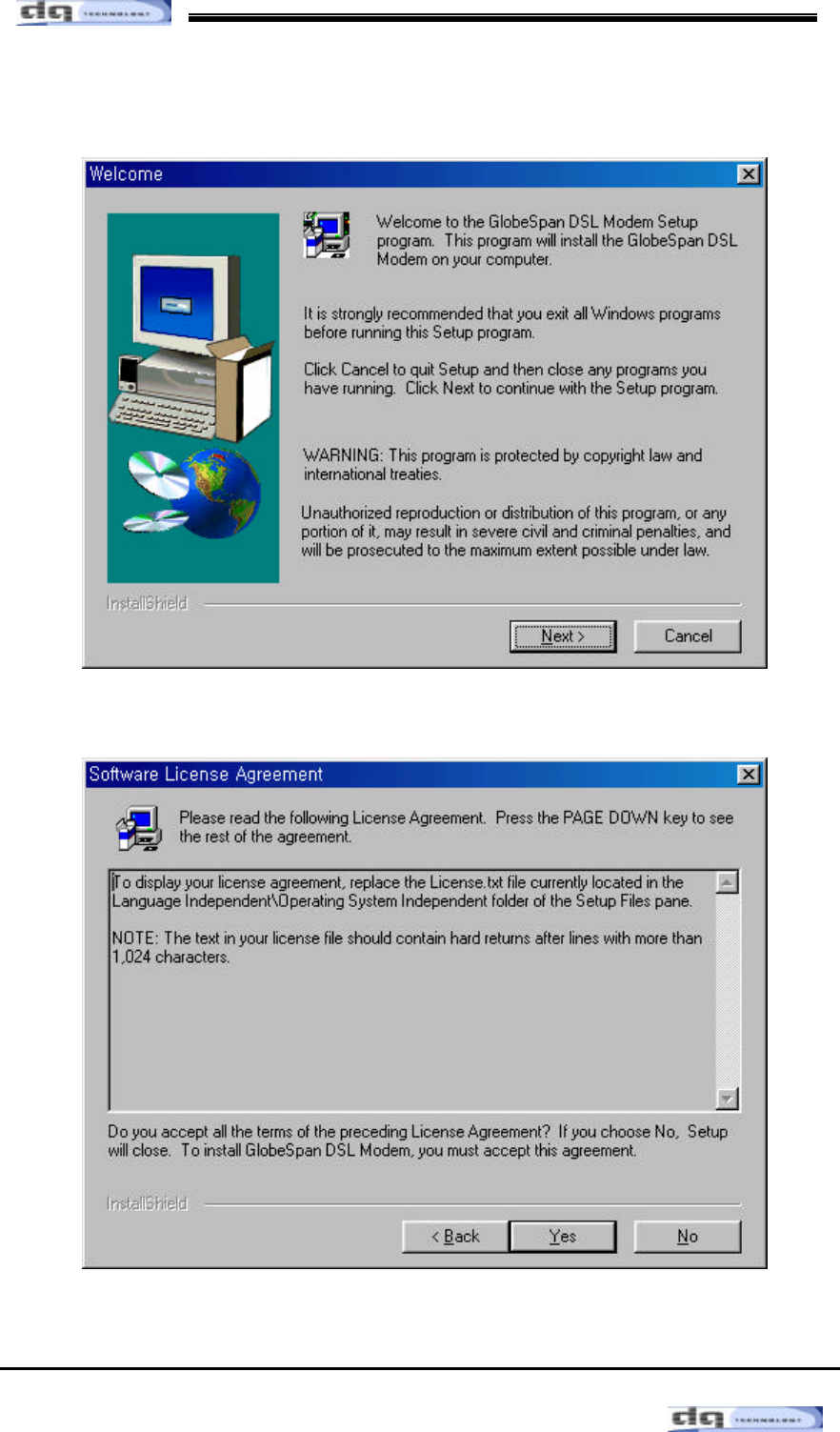
32
ADSL Modem
Manual
4-3. Click on
[Next]
4-4. Click on
[YES]
If a Microsoft digital signature dialog box displays, click on
[YES]
4-5. Click on
[Finish]
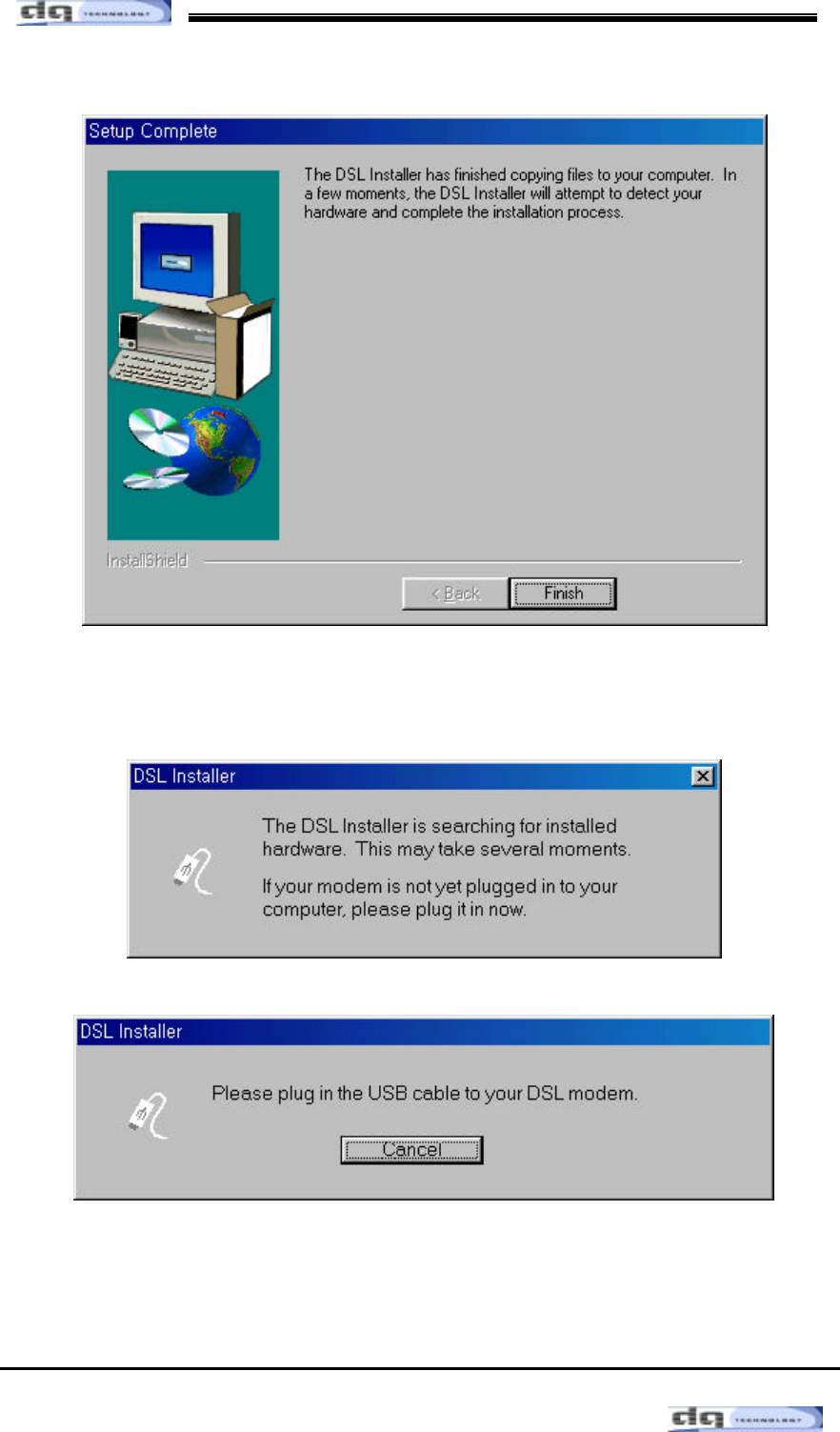
33
ADSL Modem
Manual
4-5. Plug in your USB cable
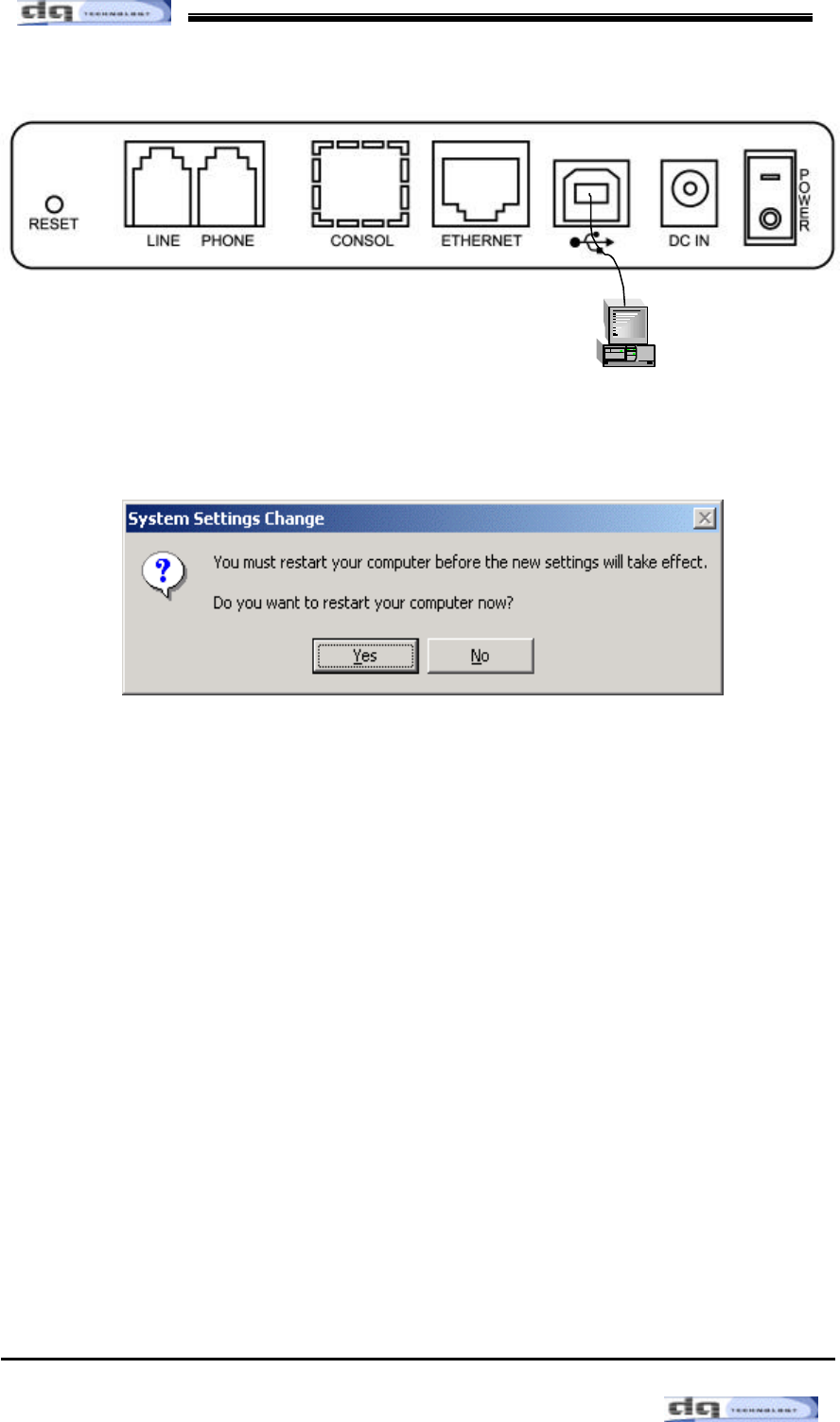
34
ADSL Modem
Manual
4-6. Reboot your computer to complete installation
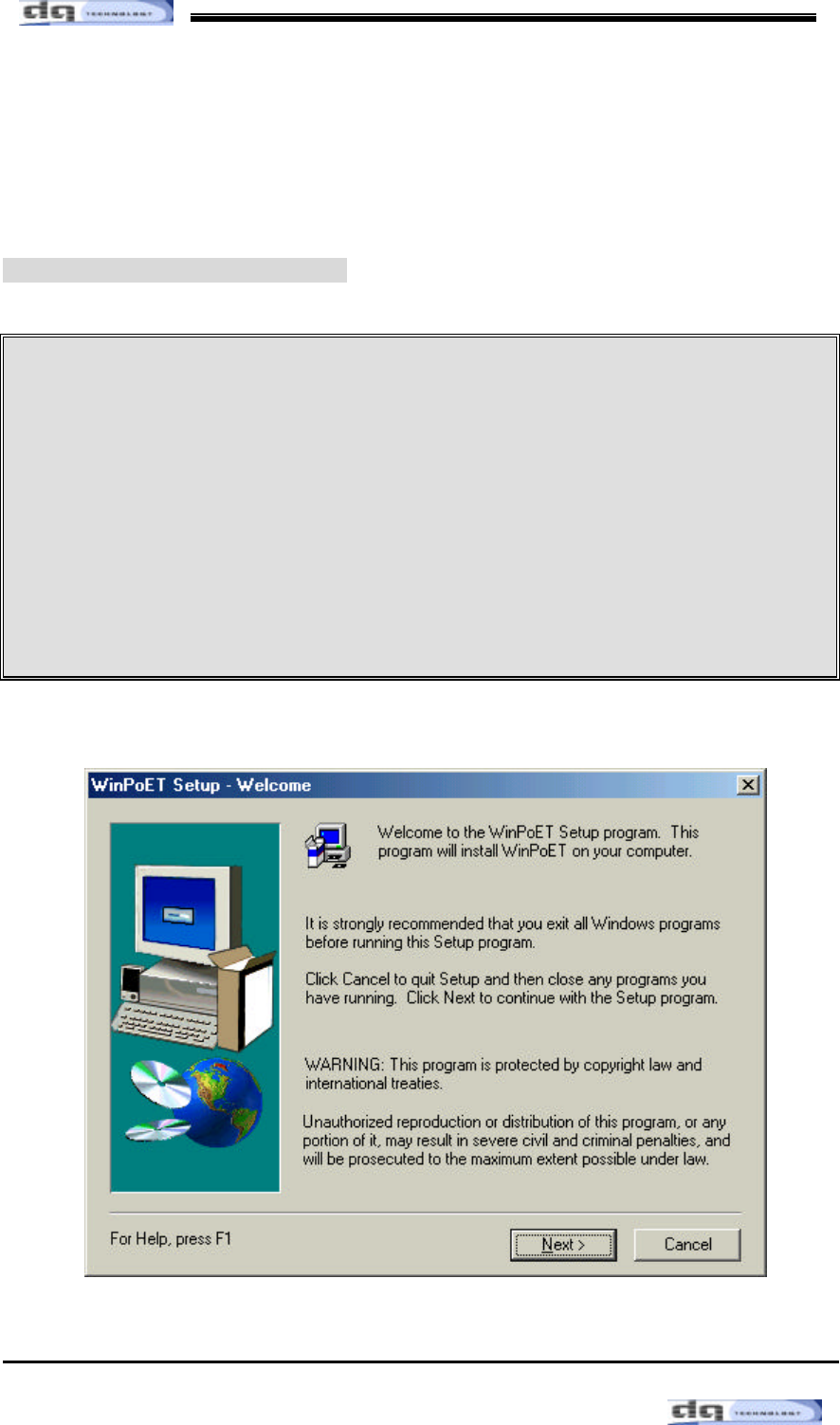
35
ADSL Modem
Manual
◈ Connect and disconnect the Internet.
After installing VISIONNET 708, you can connect the Internet following procedure..
In case of 1483 Bridged Mode
<<Notice >>
If the service type of your local ADSL service provider is PPPoE, please contact to your
local ADSL service provider to get a PPPoE session client application.
We describe the installation procedure of WinPoET, one of PPPoE session client
applications
which is generally used. Most local ADSL service providers have the software license
agreement of PPPoE session client applications, so you can download those from their
website or get those from them as CD-ROM.
1. Start installation to double-click the “WinPoET.exe” file in WinPoET setup program.
2. In
[Software License Agreement]
window
,
please read the License Agreement
carefully. click “
[Accept]
” button if you accept this agreement.
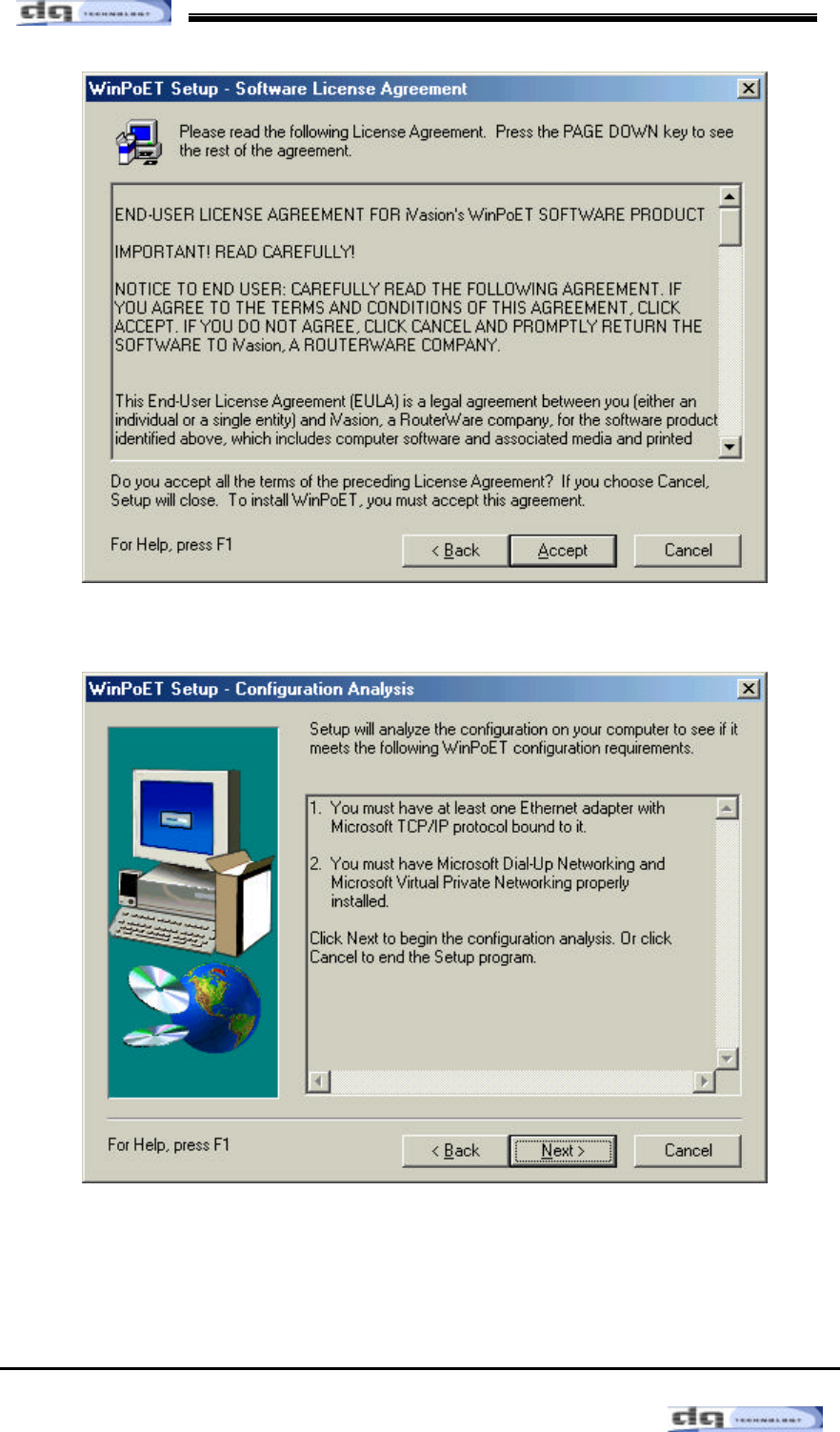
36
ADSL Modem
Manual
3. In
[Configuration Analysis]
window, click “
[Next]
” button.
4. In
[Destination Folder]
window, click “
[Next]
” button if you want to use default folder.
If you want to use different folder, click “
[Browser]
” button to select the folder.
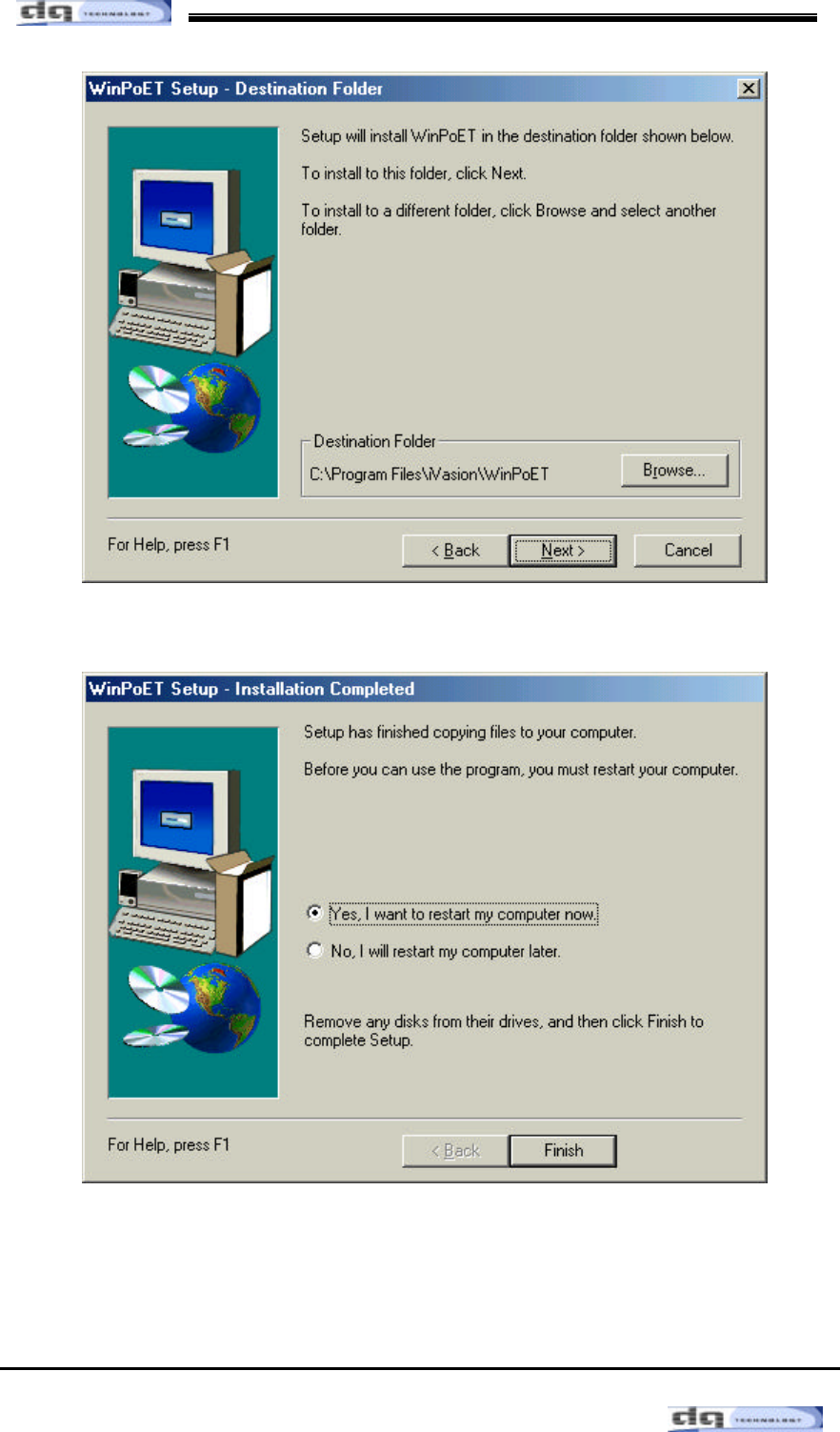
37
ADSL Modem
Manual
5. If [Installation Completed] window pops up, the installation is done successfully.
Click the “
[Next]
” button for rebooting your PC.
6. After rebooting, you can find “
[WinPoET]
”
shortcut icon on the wallpaper in your
PC. Double-click “
[WinPoET]
”
shortcut icon on the wallpaper in your PC.
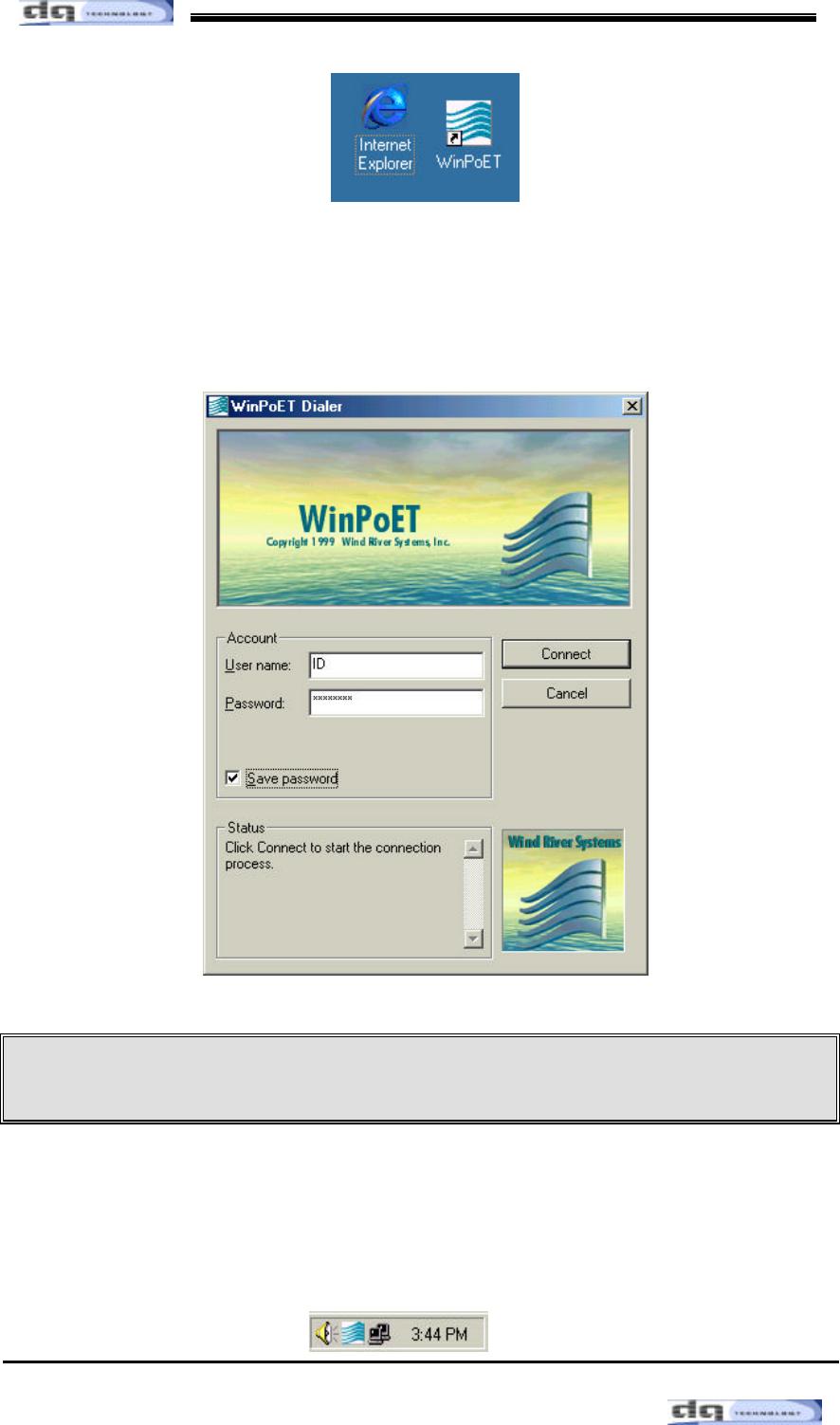
38
ADSL Modem
Manual
7. In
[ WinPoET Dialer ]
window, fill in User name & Password according your user
account at ADSL ISP, then click “Connect” button.
<<Notice >>
If you want to save the current information for future use, tick the “Save Password” box.
8. In a few seconds, the WinPoET icon appears in the system tray on your PC.
Then, connecting the Internet has finished.
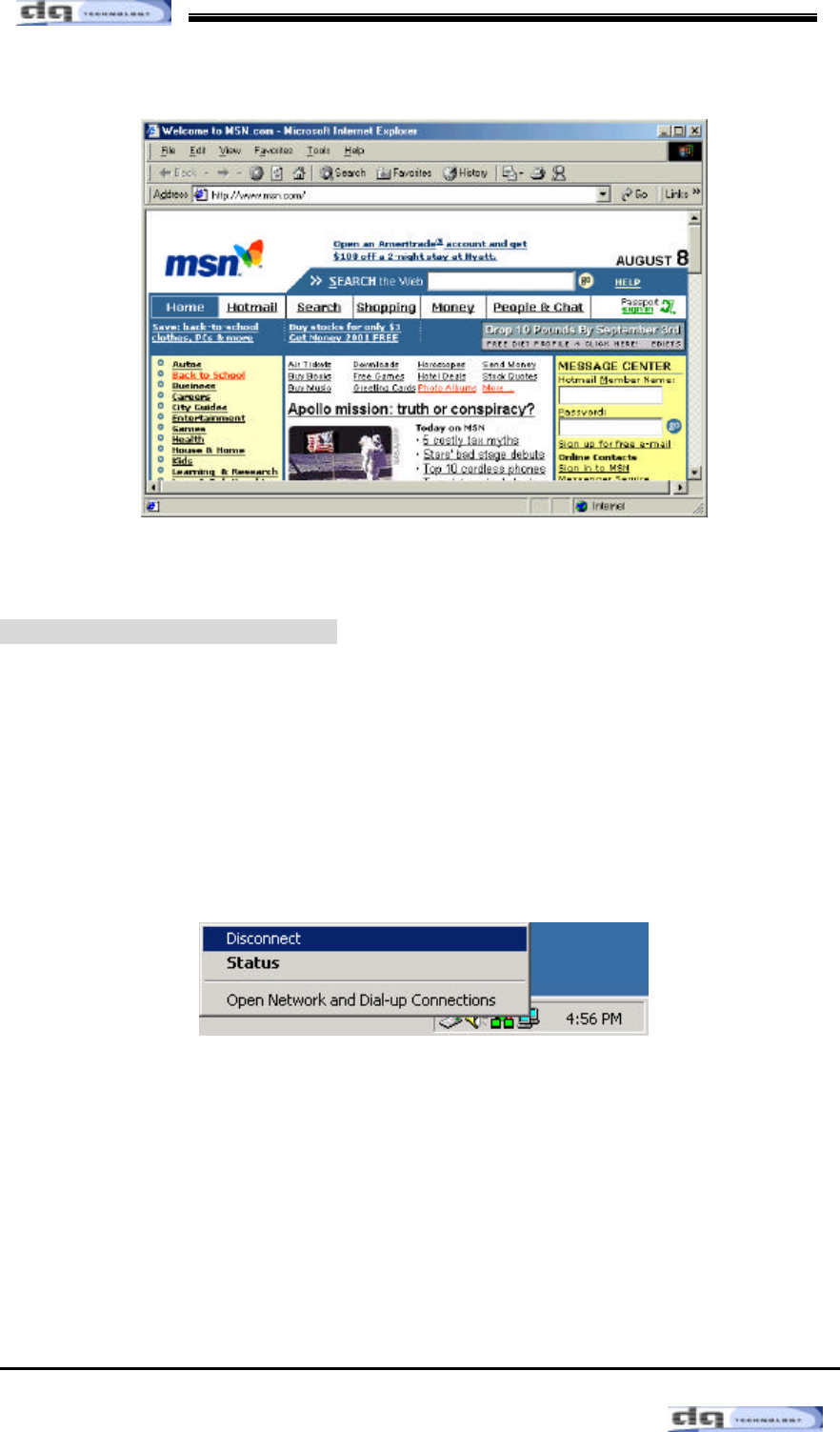
39
ADSL Modem
Manual
Disconnecting to the Internet
Click the right button in your Mouse upon the WinPoET icon in the system tray.
☞ 1) move your mouse point over the WinPoET icon in the system tray.
2) Click the right button in your mouse.
3) select “ Disconnect” and press enter to disconnect Internet.
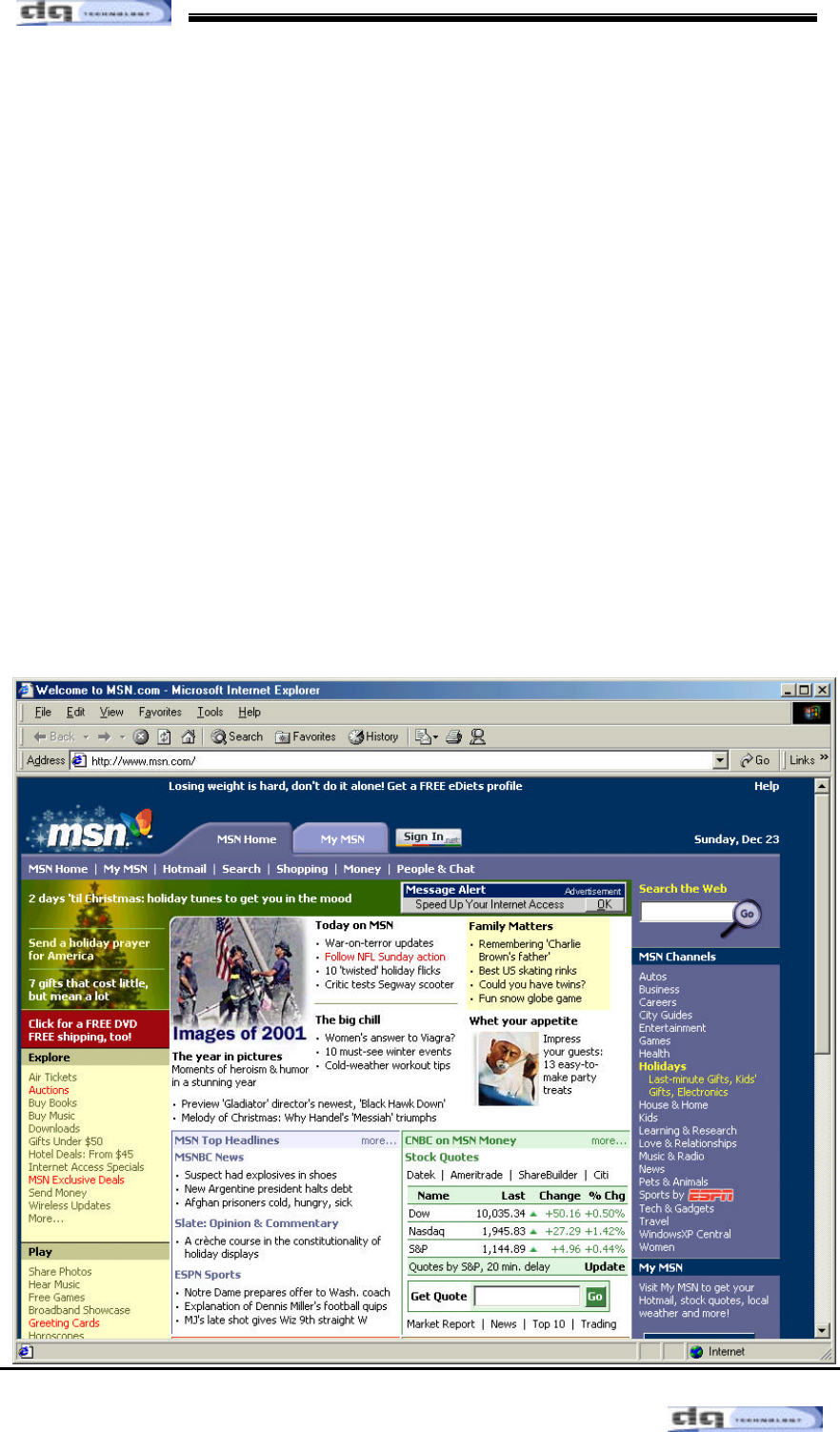
40
ADSL Modem
Manual
◈ Connecting to ADSL Network
1. Turn the power of VISIONNET 708 ADSL on. You will be connected to ADSL
network automatically, after brief initialization work.
VISIONNET 708 ADSL implements following processes during initialization.
☞ Certification process through user ID and password (When using PPPoA and
PPPoE mode)
☞ Receives IP address, subnet mask, basic gateway address, and DNS server
address from DHCP server.
2. When connected to ADSL network, you can connect to Internet using a web browser
such as Internet Explorer or Netscape.
The screen below shows the display for MSN home page connected through Internet
Explorer.

41
ADSL Modem
Manual
◈ Verifying the Connection
1. Verifying the state of VISIONNET 708 ADSL
☞ Check
[SYNC LED]
that is located on the front panel of VISIONNET 708 ADSL. If
green lamp is lit on SYNC LED, you are connected to ADSL network.
(If green lamp is blinking, it means the initialization process is going on. If the light
is off, it means you are not connected to ADSL network.)
2. Verifying PC connection
☞ Check
[LAN LED]
that is located on the front panel of VISIONNET 708 ADSL. If
green lamp is lit on LAN LED, it means PC is successfully connected to VISIONNET
708 ADSL. You can also check the connection through LEDs on the LAN card. (If
green lamp is not lit on both LEDs, it means that PC and VISIONNET 708 ADSL are
not connected through Crossover UTP cable. Connect the Crossover UTP cable.)
2. Verifying the state of telephone
☞ If dial tone is normal when picking up the phone, or if there is no noise or
entanglement of wires when talking over the phone, the connection is normal.
(Change the micro-filter if the noise is serious. If you cannot hear dial tone, check
the connection between the telephone and [PONE] port behind the VISIONNET
708 ADSL.)

42
ADSL Modem
Manual
Chapter 4. Supplement
This chapter contains troubleshooting of ADSL modem, glossary, and cable
specifications.
This chapter consists of the following items:
◈ Troubleshooting
◈ Glossary

43
ADSL Modem
Manual
◈ A Troubleshooting
Q) Communication is not working.
A)
⑴ Check first if
[LAN LED]
on the front panel of
VisionNet 708 is lit. When [LAN LED]
is not lit, check if Ethernet port on the rear panel and PC LAN card are normally
connected by direct UTP cable.
⑵ Check if
[SYNC LED]
of VisionNet 708 is lit. When [SYNC LED] is turned off,
check if telephone line is properly connected to LINE port.
⑶ If both [LAN LED] and [SYNC LED] are lit and cables are properly connected,
check the setup of LAN card. Click [Start → Setup → Control Panel → Network →
TCP/IP → Properties in sequence, and verify if IP address is set to [Automatic
Assignment of IP Address] on the IP address tap.
⑷ If values for LAN card setup are proper, execute Ping test for the LAN card.
① Click [Start → Run. When a dialogue box appears, input [ping <IP address>]
and press Enter. (For IP Address, write the value that you have received from DHCP.)
Execution screen of [ping <LAN card IP address >] command
② If
[Request timed out]
message appears, it means LAN card is improperly installed.
Refer to the instruction provided together with the LAN card. Re-install the LAN card and
re-setup.
③ If [Reply from <IP Address>: bytes=32 time<10ms TTL=128] message appears,
it means the LAN card is normally operating.

44
ADSL Modem
Manual
⑸ Now, execute Ping test for VisionNet 708.
① Clink [Start → Run. When a dialogue box appears, input [Ping 10.0.0.2] and
press Enter.
Execution screen of [ping <IP address of VisionNet 708>]
② If
[Request timed out]
message appears, turn off the power switch of VisionNet
708 and turn the power back on. Repeat the process from the step (3) one more
time. If the result is the same, contact the store where you purchased VisionNet 708.
③ If [Reply from <IP Address>: bytes=32 time<10ms TTL=128] message appears,
it means that the connection between VisionNet 708 and LAN card is normal, but
there is a problem with the setup of VisionNet 708. Contact the store where you
purchased VisionNet 708.
Q) There is no power supply on the product.
A) ⑴ Check if the power switch on the rear panel of VisionNet 708 is
ON.
⑵ Check if power cable is loosely inserted in power input port, and check if power
adapter is inserted in the outlet
⑶ Check if the power adapter is the one supplied with the VisionNet 708.
⑷ If your answers to the above three items are not positive, contact the store
where you purchased VisionNet 708.
Q) Network speed is too slow.
A) ⑴ Check if the telephone line coming into your house is not too old.

45
ADSL Modem
Manual
◈ B Glossary
100 BASE-T
A designation for the type of wiring used by Ethernet networks with a data rate of 100 Mbps.
Also known as Category 5 (CAT 5) wiring. See also data rate, Ethernet.
ADSL
Asymmetric Digital Subscriber Line
The most commonly deployed "flavor" of DSL for home users. The term asymmetrical refers to
its unequal data rates for downloading and uploading (the download rate is higher than the
upload rate). The asymmetrical rates benefit home users because they typically download
much more data from the Internet than they upload.
ATM(Asynchronous Transfer Mode)
Asynchronous Transfer Mode
A standard for high-speed transmission of data, text, voice, and video, widely used within the
Internet. ATM data rates range from 45 Mbps to 2.5 Gbps. See also data rate.
Bridging
Passing data from your network to your ISP and vice versa using the hardware addresses of
the devices at each location. Bridging contrasts with routing, which can add more
intelligence to data transfers by using network addresses instead. The [Productname] can
perform both routing and bridging. Typically, when both functions are enabled, the device
routes IP data and bridges all other types of data. See also routing.
DNS(Domain Name System)
The DNS maps domain names into IP addresses. DNS information is distributed hierarchically
throughout the Internet among computers called DNS servers. When you start to access a web
site, a DNS server looks up the requested domain name to find its corresponding IP address.
If the DNS server cannot find the IP address, it communicates with higher-level DNS servers to
determine the IP address. See also domain name.

46
ADSL Modem
Manual
DHCP(Dynamic Host Configuration Protocol)
automates address assignment and management. When a computer connects to the LAN,
DHCP assigns it an IP address from a shared pool of IP addresses; after a specified time limit,
DHCP returns the address to the pool.
Ethernet
The most commonly installed computer network technology, usually using twisted pair wiring.
Ethernet data rates are 10 Mbps and 100 Mbps. See also 10BASE-T, 100BASE-T, twisted pair.
FTP(File Transfer Protocol)
A program used to transfer files between computers connected to the Internet. Common uses
include uploading new or updated files to a web server, and downloading files from a web
server.
IP address(Internet Protocol address)
The address of a host (computer) on the Internet, consisting of four numbers, each from 0 to
255, separated by periods, e.g., 209.191.4.240. An IP address consists of a network ID that
identifies the particular network the host belongs to, and a host ID uniquely identifying the host
itself on that network. A network mask is used to define the network ID and the host ID.
Because IP addresses are difficult to remember, they usually have an associated domain name
that can be specified instead. See also domain name, network mask.
ISP(Internet Service Provider)
A company that provides Internet access to its customers, usually for a fee.
PPPoA(Point-to-Point Protocol over ATM)
One of the two types of PPP interfaces you can define for a Virtual Circuit (VC), the other type
being PPPoE. You can define only one PPPoA interface per VC.
PPPoE(Point-to-Point Protocol over Ethernet)
One of the two types of PPP interfaces you can define for a Virtual Circuit (VC), the other type
being PPPoA. You can define one or more PPPoE interfaces per VC.

47
ADSL Modem
Manual
POTS(Plane Old Telephone Service)
Traditional analog telephone service using copper telephone lines. Pronounced "pots." See
also PSTN.
TCP/IP(Transmission Control Protocol/Internet Protocol)
The basic protocols used on the Internet. TCP is responsible for dividing data up into packets
for delivery and reassembling them at the destination, while IP is responsible for delivering the
packets from source to destination. When TCP and IP are bundled with higher-level
applications such as HTTP, FTP, Telnet, etc., TCP/IP refers to this whole suite of protocols.
Telnet
An interactive, character-based program used to access a remote computer. While HTTP (the
web protocol) and FTP only allow you to download files from a remote computer, Telnet allows
you to log into and use a computer from a remote location.
Routing
Forwarding data between your network and the Internet on the most efficient route, based on
the data’s destination IP address and current network conditions. A device that performs
routing is called a router.
WWW(World Wide Web)
Also called (the) Web. Collective term for all web sites anywhere in the world that can be
accessed via the Internet.
Splitter
A device that splits off the voice component of the DSL signal to a separate line, so that data
and telephone service each have their own wiring and jacks. The splitter is installed by your
telephone company where the DSL line enters your home. The CO also contains splitters that
separate the voice and data signals, sending voice to the PSTN and data on high-speed lines
to the Internet. See also CO, PSTN, splitterless, microfilter.

48
ADSL Modem
Manual
PPP(Point-to-Point Protocol)
A protocol for serial data transmission that is used to carry IP (and other protocol) data
between your ISP and your computer. The WAN interface on the [Productname] uses two
forms of PPP called PPPoA and PPPoE. See also PPPoA, PPPoE.
VCI(Virtual Channel Identifier)
Together with the Virtual Path Identifier (VPI), the VCI uniquely identifies a VC. Your ISP will tell
you the VCI for each VC they provide. See also VC.
VPI(Virtual Path Identifier)
Together with the Virtual Circuit Identifier (VCI), the VPI uniquely identifies a VC. Your ISP will
tell you the VPI for each VC they provide. See also VC.
NAT(Network Address Translation)
A service performed by many routers that translates your network’s publicly known IP address
into a private IP address for each computer on your LAN. Only your router and your LAN know
these addresses; the outside world sees only the public IP address when talking to a
computer on your LAN.
WAN(Wide Area Network)
Any network spread over a large geographical area, such as a country or continent. With
respect to the [Productname], WAN refers to the Internet.

FCC Compliance Statements
NOTE : This equipment has been tested and found to comply with the limits
for a Class B digital device, pursuant to part 15 of the FCC Rules. These
limits are designed to provide reasonable protection against harmful
interference in a residential installation. This equipment generates, uses
and can radiate radio frequency energy and, if not installed and used in
accordance with the instructions, may cause harmful interference to radio
communications. However, there is no guarantee that interference will
not occur in a particular installation. If this equipment does cause
harmful interference to radio or television reception, which can be
determined by turning the equipment off and on, the user is encouraged
to try to correct the interference by one or more of the following
measures :
Reorient or relocate the receiving antenna
Increase the separation between the equipment and receiver.
Connect the equipment into an outlet on a circuit different from
that to which the receiver is connected.
Consult the dealer or an experienced radio/TV technician for help.
Warning : Modifications not expressly approved by the manufacturer could
void the user’s authority to operated the equipment under FCC rules.
49